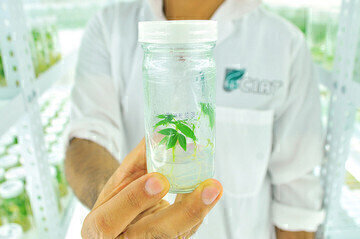Water/Wastewater
Getting to Grips with Grab Sampling
Jan 09 2015
Grab sampling is one of two main methods generally used to sample water quality from water bodies such as rivers, lakes or temporary events such as storm water. The grab sampling technique is a well-defined six step process for taking a single sample or measurement at a specific time, place and depth, thereby providing a snapshot or single representation of the water quality at that particular moment in time.
There are many different types of environmental sample methods – you can find a useful guide offering an overview of some of the most commonly used sampling methods here.
An introduction to grab sampling
Before a grab sample can be collected, it is essential to prepare beforehand: the sampler will need to clarify and understand the objectives of the sample, put together an equipment pack, and determine the location of the sample.
While conditions will vary between laboratories, reliable lab testing requires the use of approved, uncontaminated equipment for sample collection and transport, and may also require preservatives, zip bags, correctly labelled containers, cool boxes and ice.
Grab sampling can prove problematic depending on the body of water monitored. In order to continually monitor a river or lake through grab sampling, consideration will need to be given to periods of heavy rainfall or drought when the depth of the water will be changeable. This may impact the location and depth of the sample.
Collecting a sample
Sample collection is usually time and location critical, and collection techniques will vary depending on the terrain and season. There are, however, some general rules of thumb which should apply to most sampling collections.
Collected in an open container or bottle, grab sampling can be performed by hand or by suspension. If collected by hand, the sampler is usually required to wade into the water to a predetermined spot and take the sample standing downstream with the open container facing upstream. The container will need to be dipped into the water to a specific depth to collect a sample.
The sampler will need to take care not to disturb the riverbed or lake floor when wading so that the sample will not be contaminated. If the sampler is collecting from a flowing body of water, they should collect as close to the centre of the flow as possible to be representative of the discharge.
Grab sampling results
In addition to labelling the sample for lab testing, it is often advised to make notes on the conditions of the sampling event, and consider taking photographs of the collection site as a reminder of conditions when filling out any monitoring reports.
Without further monitoring, the results of grab sampling cannot be extrapolated to other parts of the body of water or to other times. In order for the results of grab sampling to be considered representative, routine samples will need to be carried out at different times of day and at different times of year to establish that the grab-sample location is as representative as possible.
Digital Edition
IET 34.2 March 2024
April 2024
Gas Detection - Biogas batch fermentation system for laboratory use with automatic gas analysis in real time Water/Wastewater - Upcycling sensors for sustainable nature management - Prist...
View all digital editions
Events
Apr 30 2024 Melbourne, Australia
Apr 30 2024 Birmingham, UK
May 03 2024 Seoul, South Korea
May 05 2024 Seville, Spain
May 06 2024 Minneapolis, MN, USA


















